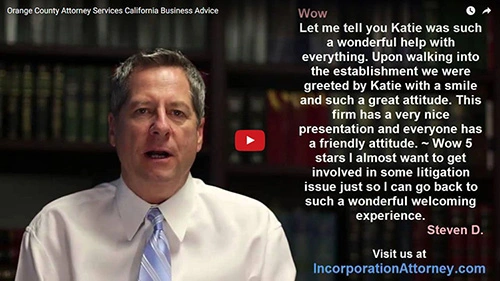Video Summary:
In this transcript from a video of corporate attorney Andy Gale of Gale & Vallance in Orange County explains the process of determining fair market value of a business when bringing in new capital from an existing shareholder. He walks through a real-world scenario involving share valuation, capital infusion, and fair distribution of ownership percentages.
To learn more about determining fair market value of a business and ensuring accurate share valuation, check out our detailed article on business valuation methods and legal considerations.
This discussion is for informational purposes only and does not constitute legal advice. We recommend contacting a qualified lawyer to discuss your specific corporate ownership and share distribution needs.
Multiple Shareholders and Capital Needs (00:00:13.799)
It’s not an uncommon situation where I will have a corporation owned by multiple shareholders
Deciding to Bring in Additional Capital (00:00:19.900)
and midway through the life of the corporation they decide that they need to bring in additional
Source of Additional Capital (00:00:25.770)
capital to fund operations.
And sometimes the source of that additional capital is one of the current shareholders.
Client Scenario – $70,000 Capital Infusion (00:00:28.539)
This morning I had a client that was in that exact situation, and what they wanted to do
was get an influx of capital, specifically $70,000.
Determining Number of Shares to Issue (00:00:43.550)
And they were just trying to figure out the exact number of shares they would issue to
the current shareholder so that the company could bring in the $70,000.
Step One – Valuing the Corporation (00:00:54.250)
So the first trick was to figure out what the value of the corporation was.
In this email that I sent to the client we made an assumption that the value would be
a fair market value, and in this particular case that value would be $430,000 as agreed
by all the shareholders.
Knowing Current Shares Issued (00:01:11.930)
And we also knew what the current number of shares that were issued by the company.
Calculating Value Per Share (00:01:17.130)
So once we had those 2 figures what we would do then is divide the value of the company
by the number of shares issued and we would then come up with the current value of a share,
1 share, and that was in this particular case $1.74 per share.
Determining Shares to Sell for Capital (00:01:34.399)
So then what we decided was if we wanted to bring in $70,000 in capital we would divide
$70,000 by the current price per share and that would tell us how many shares we would
have to sell from the corporation in order to reach our goal of bringing in $70,000.
Final Calculation and Outcome (00:01:53.270)
So in this particular case that was selling 44,230 shares at a price of $1.74 per share,
and then we would then end up with a corporation that had a total fair market value of $500,000
and the shareholders would all have the number of shares that would properly and currently
reflect that per share price.
Conclusion – Determining Fair Market Value of a Business
This example shows how determining the fair market value of a business is a critical first step before issuing additional shares to raise capital. By agreeing on the company’s value, knowing the number of existing shares, and calculating the per-share price, business owners can make informed decisions that maintain fair ownership percentages. For personalized advice on corporate ownership and capital infusion strategies, consult an experienced attorney.








